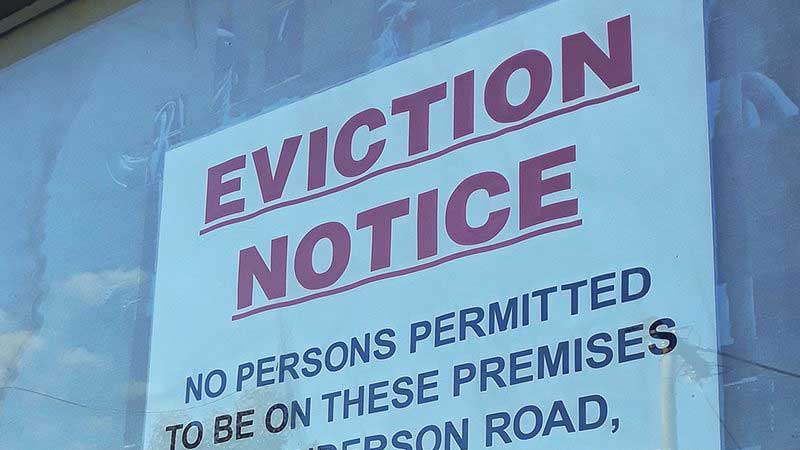 VIEW LARGER
VIEW LARGER Evictions filed in Pima County nearly doubled in just one month, partly due to a Superior Court ruling earlier this year.
The August Housing Insecurity and Homelessness Report from the Southwest Institute for Research on Women found there were 1,096 eviction filings in July, compared to 582 in June.
Housing expert Keith Bentele said the numbers were a dramatic reversal of eviction numbers, which fell over 50% in the first six months of the year.
According to Bentele, eviction rates often fluctuate between the spring and summer because extra income from tax refunds runs out, but another unique legal situation is partially to blame for the steep increase.
In February, a Superior Court ruling stated landlords in certain federally-assisted properties must give tenants 30 days after a notice of missed payment before filing the actual eviction with the courts.
Attorney for Southern Arizona Legal Aid Alan Solot said the Superior Court ruling in question overturned a previous Justice Court ruling permitting a landlord to start the eviction process within the 30 days, they just couldn’t deliver the official writ of restitution, which is the legal document which allows a landlord to remove a tenant, until after the 30 days.
The ruling currently stands, landlords can’t start eviction action until 30 days have gone by, Solot said.
The properties eligible for this provision are designated “Covered Properties,” by the pandemic-era CARES Act, meaning they receive funds from certain federal housing programs, or are backed by a federally guaranteed loan.
Solot said the roots of this legal dilemma stem from a provision in the CARES Act that required a 30 day waiting period after a notice of missed rent, before a landlord could start the eviction process. Although the eviction moratorium portion of the CARES act expired, Solot said the law did not include a “sunset provision,” meaning lawmakers did not give the clause that stipulated the 30 day grace period an expiration date.
“Whether it’s a mistake or not, doesn’t matter, it’s not there,” he said.
Bentele says it’s likely this new ruling is causing a “catch-up” effect as landlords wait for the 30 days to pass.
“A lot of those eviction filings that were rejected over these couple months between February and June are likely returning now that enough time has elapsed,” he said.
But, bigger picture, he says that evictions in the thousands are likely symbolic of a return to a high “normal,” which is concerning.
“This line I keep repeating all the time is that we are in a moment of uniquely low unemployment. And so, having this really elevated level of evictions during this time is very suggestive that low income families are in very vulnerable situations,” Bentele said.
Bentele said early eviction numbers for August are likely to remain at similarly high levels.

By submitting your comments, you hereby give AZPM the right to post your comments and potentially use them in any other form of media operated by this institution.